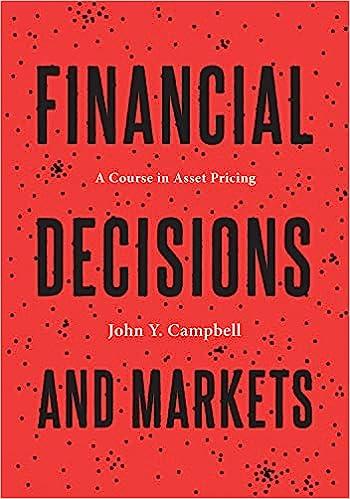A representative agent in an endowment economy has power utility with time discount factor (delta) and coefficient
Question:
A representative agent in an endowment economy has power utility with time discount factor \(\delta\) and coefficient of relative risk aversion \(\gamma\). The \(\log\) of the endowment, \(c_{t}\), follows a random walk with drift:
![]()
The shock to endowment growth rate is iid over time, distributed normally with mean zero and variance \(\sigma^{2}\).
(a) Solve for the log riskless interest rate. Explain the forces that determine it.
(b) Consider an infinite-lived asset whose \(\log\) dividend is \(\lambda c_{t}\) in each period. The coefficient \(\lambda\) can be loosely thought of as a measure of leverage, and the asset can be called "levered equity." Solve for the arithmetic risk premium on levered equity and the arithmetic average growth rate of the dividend on levered equity.
(c) Now suppose the volatility of endowment growth increases, while the parameter \(g\) changes to maintain the same arithmetic average growth rate of the endowment. What is the effect on the riskless interest rate? What is the effect on the arithmetic risk premium of levered equity? What is the effect on the arithmetic average growth rate of the dividend on levered equity?
(d) With power utility, higher endowment volatility with an unchanged arithmetic average endowment growth rate lowers the price of unlevered equity only if \(\gamma
(e) Relate your answer to the debate about the magnitude of the elasticity of intertemporal substitution and the relative merits of Epstein-Zin utility and power utility as descriptions of investor preferences.
Step by Step Answer:

Financial Decisions And Markets A Course In Asset Pricing
ISBN: 9780691160801
1st Edition
Authors: John Y. Campbell





